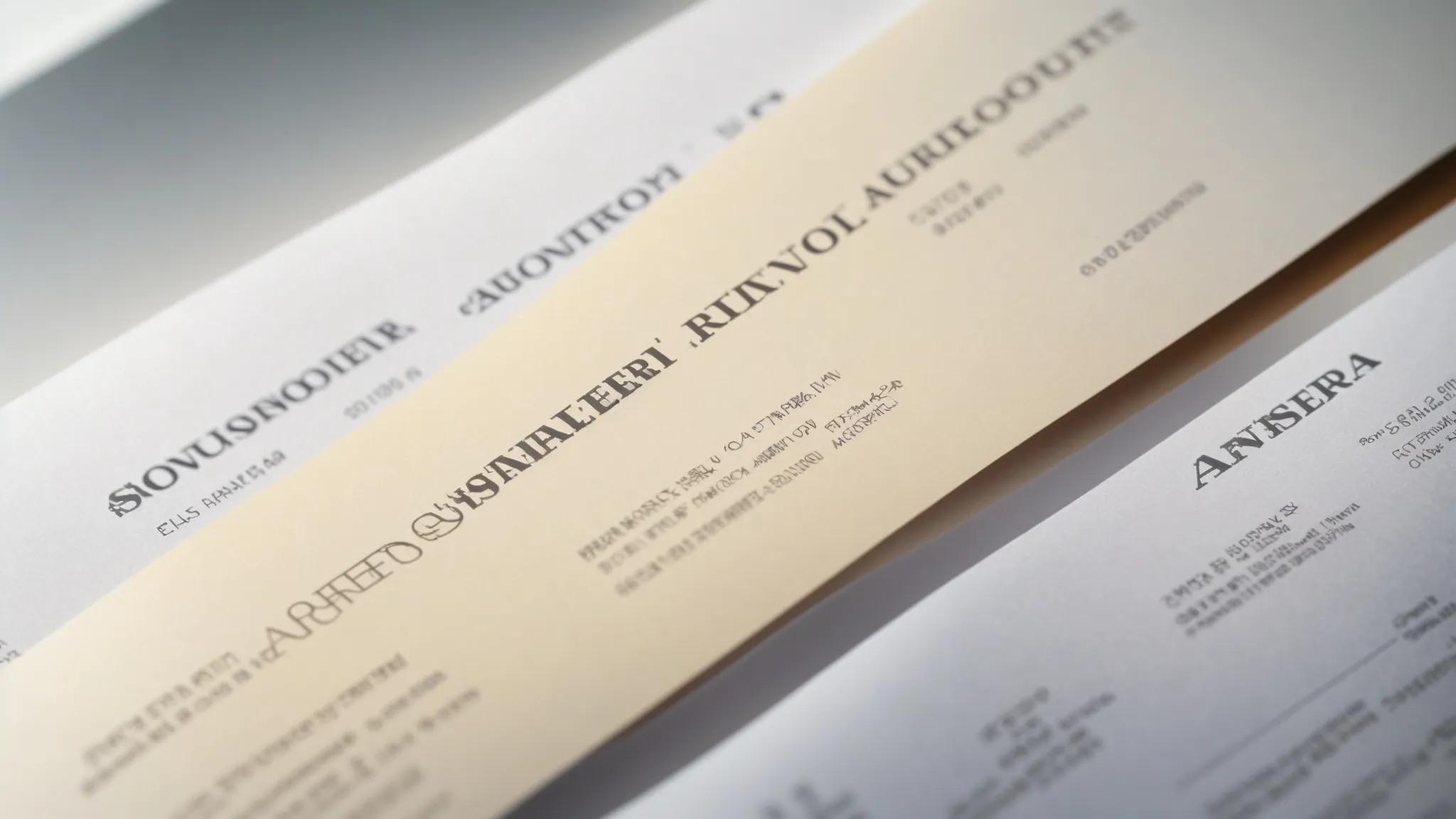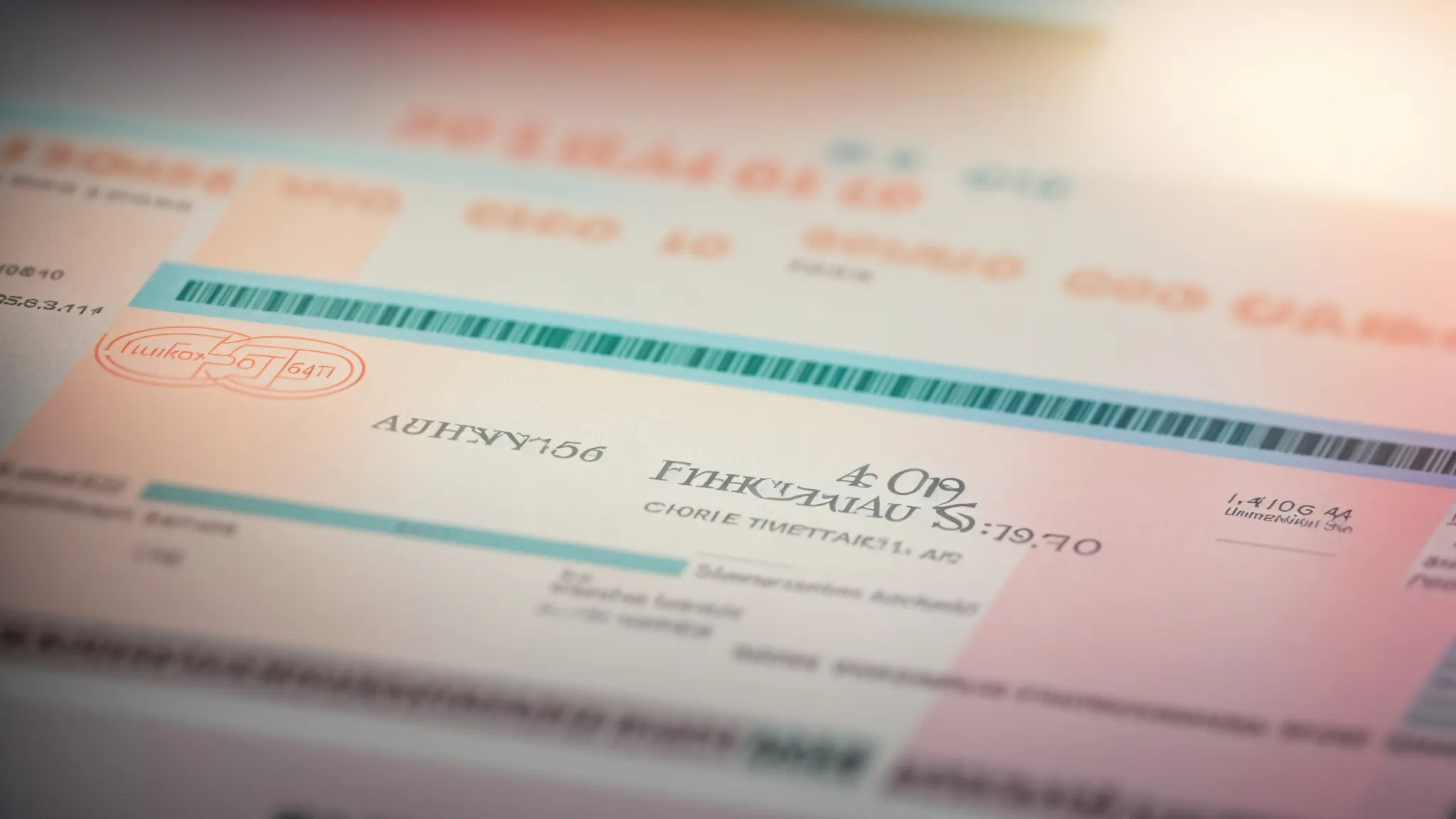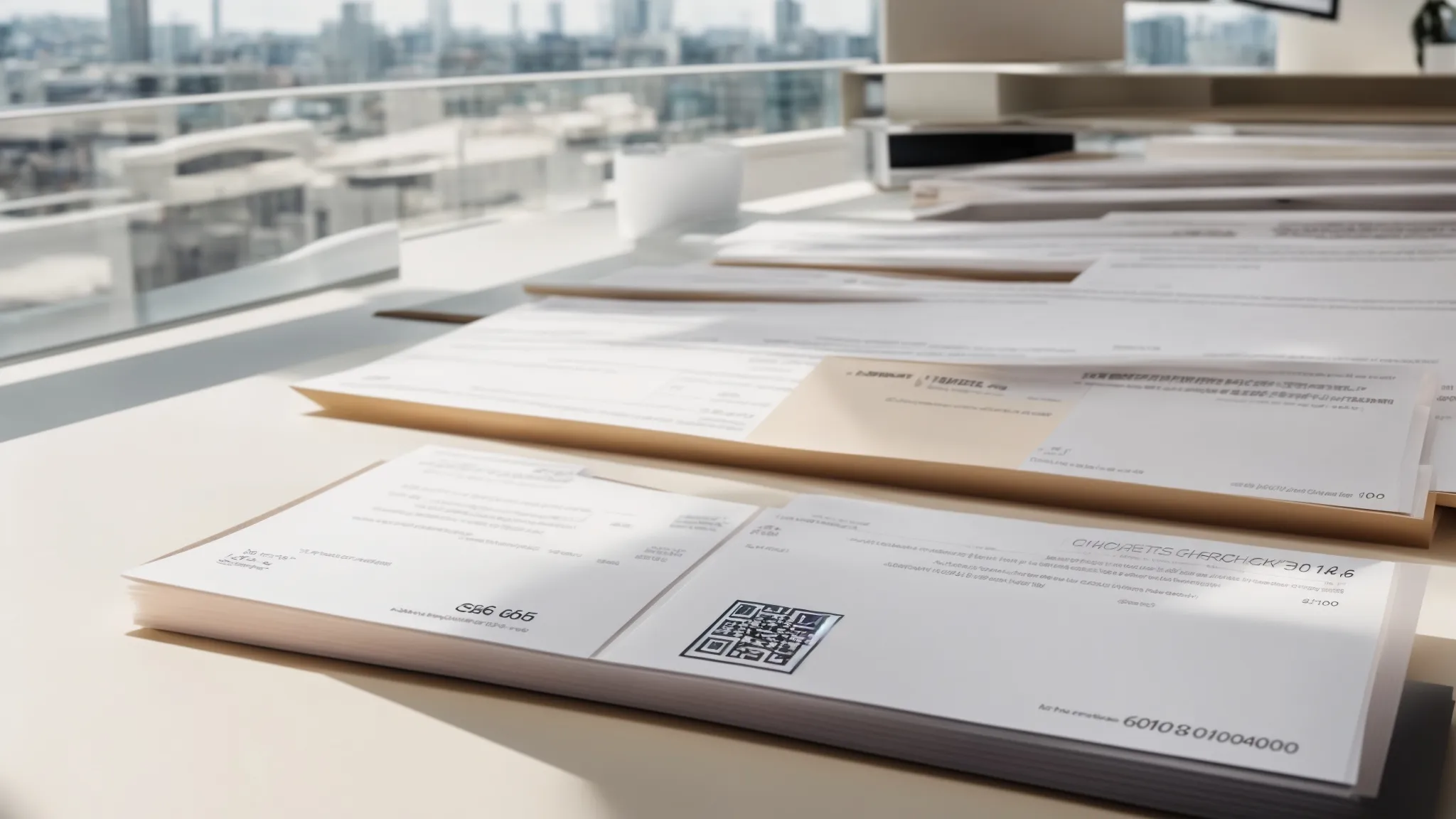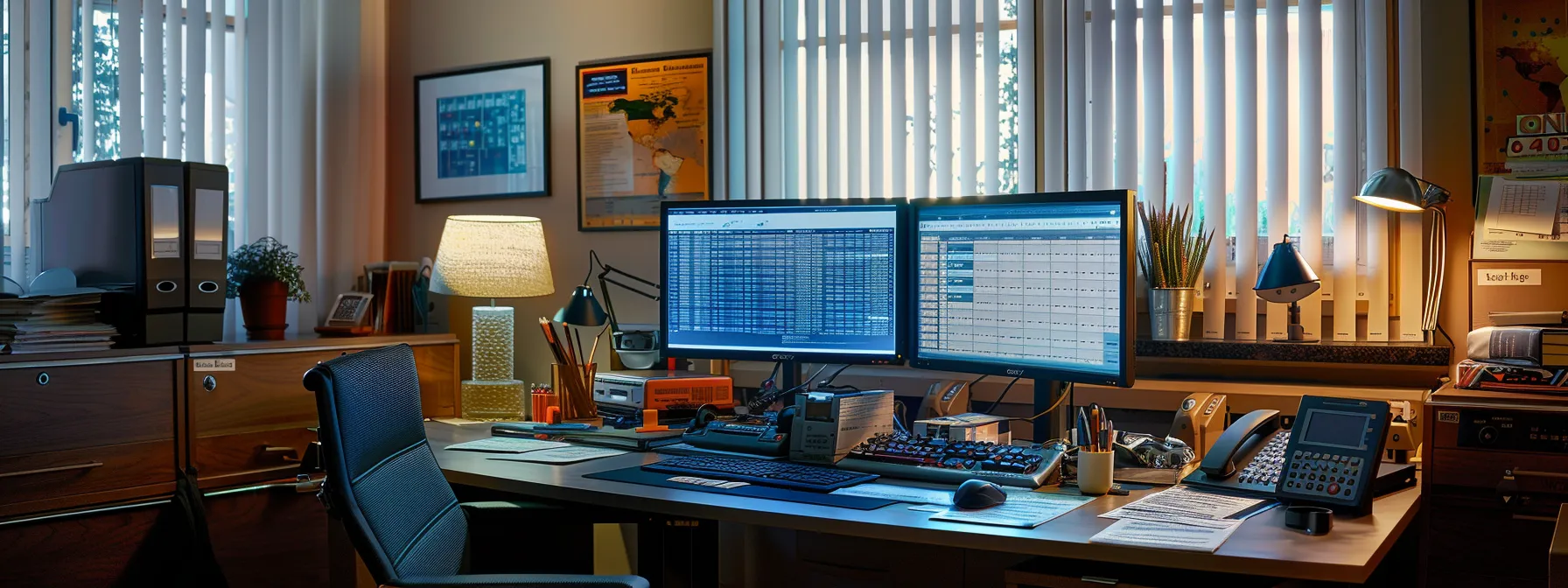Many business owners struggle with choosing the right printing options for custom business cheques, often leading to confusion and delays. This article explores the essential elements of check printing, including paper quality, design features, and cost considerations. By understanding these factors, readers will enhance their customer service by making informed decisions that meet their unique needs while ensuring their vendor provides competitive pricing. Whether it’s choosing the best size or evaluating print quantity, this guide will help streamline the process and resolve any uncertainties surrounding custom checks.
Understanding Various Printing Techniques for Custom Business Cheques

Digital printing offers efficiency and customization benefits for producing business cheques, while offset printing presents a cost-effective option for larger orders. Security printing methods are vital for safeguarding financial documents. Comparing these techniques will help customers assign the right printing method to their specific cheque needs, ensuring reliability and peace of mind.
Digital Printing and Its Advantages for Business Cheques
Digital printing stands out for its efficiency and flexibility, making it an excellent choice for custom business cheques. This method allows for rapid production, especially for businesses that require smaller quantities or frequent design changes. For instance, those utilizing accounting software like Quicken can benefit from cheques printed with magnetic ink character recognition (MICR), ensuring compatibility with automated processing systems and enhancing security.
Moreover, digital printing enables businesses to customize each cheque according to their needs. With options for different colours and designs, companies can create cheques that reflect their brand identity. This is particularly advantageous for organizations that also require matching envelopes, delivering a cohesive look. Ultimately, the ability to print precise information on-demand decreases lead times and meets the dynamic needs of businesses across various sectors.
Offset Printing Benefits and Applicability
Offset printing is a highly effective method for producing business checks, particularly for larger orders. This technique provides a cost-efficient solution, especially when users need to place bulk check orders. By leveraging efficient production processes, businesses can minimize fees associated with printing costs while ensuring high-quality output. This can be particularly beneficial when ordering laser checks, which require precise details and consistent quality.
Moreover, offset printing accommodates advanced security features, such as encryption, that safeguard financial transactions. This is essential for businesses, as checks must not only look professional but also provide robust protection against fraud. Companies that prioritize security while maintaining a professional appearance should consider the advantages of offset printing to meet their specific needs effortlessly.
Security Printing Methods to Protect Your Cheques
Security printing methods play a crucial role in protecting cheques from fraud, especially for businesses utilizing voucher checks and paycheck disbursements. Incorporating features such as watermarks, micro-printing, and color-shifting inks can significantly enhance the security of printed financial documents. These features provide an added layer of protection that reduces the risk of unauthorized alterations and counterfeiting, giving businesses peace of mind when they order business checks.
For companies seeking expedited processing of payroll or payments, it is essential to choose a printing solution that prioritizes security. By selecting a cheque manufacturer that employs advanced security printing techniques, businesses can ensure their cheques are not only visually appealing but also secure against potential fraud. This commitment to security helps foster trust among clients and employees, ultimately supporting a company’s reputation and financial integrity.
Comparing Printing Methods and Choosing the Right Option
When comparing printing methods for custom business checks, businesses should consider their specific needs and order volumes. Digital printing is ideal for smaller quantities and customization, allowing companies to create branded checks tailored to their unique specifications. On the other hand, offset printing offers cost efficiencies for bulk orders, producing high-quality printed checks that maintain professional standards while accommodating advanced security features.
Selecting the right printing method can significantly impact a company’s financial operations. For those prioritizing brand identity, customized checks produced through digital printing can enhance a business’s image by incorporating distinctive designs and colors. Conversely, businesses that prioritize cost savings and security should evaluate bulk ordering options with offset printing to ensure reliable and secure processing of their computer checks.
Printing techniques matter, but the choice of paper shapes your business cheque’s strength and quality. Next, the focus will shift to evaluating paper types, where each decision impacts how your cheque feels and performs.
Evaluating Paper Quality and Types for Business Cheques

Choosing the right paper for business cheques is essential to ensure quality and functionality. The paper weight significantly influences the cheque’s durability, while the choice between coated and uncoated paper affects the appearance and ink absorption. Additionally, considering environmental factors in paper selection reflects a company’s commitment to sustainability, aligning with values that many businesses, including those in accounting, now prioritize.
Understanding these aspects will guide businesses in selecting the right paper type for their specific cheque styles. By doing so, companies can enhance their payroll processes and ensure a trustworthy image through high-quality cheques. Exploring these factors helps business owners make informed decisions when uploading cheque orders.
Importance of Choosing the Right Paper Weight
Choosing the right paper weight for business cheques is crucial in maintaining a professional appearance and ensuring durability throughout the payment process. A heavier paper weight not only conveys a sense of quality but also resists wear and tear, which is particularly important for businesses managing accounts payable. For instance, a cheque printed on 24 lb. paper provides enhanced structural integrity, minimizing the risk of damage during handling or transit.
In addition to durability, the appropriate paper weight improves the cheque’s functionality, especially when it comes to processing expenses. Cheques that are too thin may cause issues during electronic processing, leading to delays or discrepancies in payment. By opting for a suitably weighted paper, businesses can streamline their financial operations and boost confidence in their payment methods, ensuring that finances are handled smoothly and efficiently.
Coated vs. Uncoated Paper for Different Cheque Styles
The choice between coated and uncoated paper significantly impacts the appearance and functionality of business cheques. Coated paper offers a smooth finish, which enhances the vibrancy of printed colors and logos, making it ideal for businesses that prioritize a polished and professional look. For example, companies that want their cheques to reflect a high-end image might lean towards coated paper, which better showcases intricate designs and branding elements.
In contrast, uncoated paper provides a more textured feel, which can convey authenticity and a traditional touch. This option is often preferred by businesses aiming for a straightforward, classic appearance. Additionally, uncoated paper absorbs ink well, resulting in clearer text and less smudging during processing. Organizations that deal with various payment types may find uncoated paper to be more functional for their cheque needs, ensuring reliable execution without compromising on presentation.
Environmental Considerations in Paper Selection
When selecting paper for custom business cheques, environmental considerations are increasingly important for many organizations. Choosing recycled or sustainably sourced paper not only reduces an organization’s ecological footprint but also reflects a commitment to corporate responsibility. Companies can contribute to environmental preservation while maintaining high-quality standards by opting for eco-friendly paper options that still meet functional needs.
In addition to sustainability, businesses should evaluate the certifications of the paper they purchase. Certifications such as FSC (Forest Stewardship Council) guarantee that the paper comes from responsibly managed forests. This assurance can enhance a company’s reputation by demonstrating that it values environmental stewardship. By making these informed decisions, organizations can align their cheque printing practices with broader goals of sustainability and ethical responsibility, appealing to both clients and employees alike.
Choosing the right paper lays the foundation for reliable business cheques. Now, it is time to explore how custom features can elevate those cheques into something truly unique and secure.
Designing Custom Features for Enhanced Business Cheques

Incorporating custom features in business cheques enhances their effectiveness and security. This section delves into three key aspects: effectively adding logos and branding elements to create a professional identity, understanding how color can influence cheque design and recognition, and integrating security features like watermarks and microprinting to protect against fraud. Each topic provides valuable insights for creating distinctive cheques that serve both functional and branding purposes.
Incorporating Logos and Branding Elements Effectively
Incorporating logos and branding elements into custom business cheques is essential for establishing a professional identity. Companies can achieve this by selecting a prominent location on the cheque for their logo, ensuring visibility without compromising essential cheque information. This strategic placement not only enhances brand recognition but also distinguishes the cheques from standard templates used by competitors.
Colors and designs play a significant role in creating a cohesive brand image. Utilizing brand colors throughout the cheque design can reinforce familiarity and trust among clients. For example, a well-placed logo, combined with matching colors, can elevate the cheque’s overall appearance, making it more appealing and signaling professionalism to recipients while maintaining functionality in financial transactions.
Understanding the Role of Color in Cheque Design
Color plays a significant role in cheque design, impacting both recognition and professionalism. For businesses, selecting a color palette that aligns with their brand is essential for fostering trust and familiarity among clients. For instance, using a company’s signature colors on cheques can make them more identifiable, while vibrant hues can enhance their visual appeal, ensuring they stand out during transactions.
Moreover, the choice of color can influence perception and emotional response. Softer colors may convey reliability and calmness, while bolder colors often express confidence and creativity. This thoughtful application of color not only reinforces brand identity but also enhances the overall effectiveness of business cheques in financial transactions, making it easier for recipients to associate the cheque with the issuing company.
Adding Security Features Such as Watermarks and Microprinting
Incorporating security features like watermarks and microprinting is essential for enhancing the protection of custom business cheques. Watermarks serve as a visible deterrent against counterfeiting, making it difficult for unauthorized individuals to replicate the cheque’s appearance. This added layer of security not only safeguards financial transactions but also reassures clients that their payments are handled with care and integrity.
Microprinting is another effective security measure that provides a clear advantage in fraud prevention. This technique involves printing small text that is difficult to replicate, making it easier to identify authentic cheques. By integrating both watermarks and microprinting into cheque design, businesses can significantly reduce the risk of fraud, ensuring their financial documents remain secure and trustworthy, while enhancing the overall professionalism of their payment methods.
As businesses seek to stand out, the choice of cheque size becomes an important factor. Let’s examine the differences between standard and custom size options that can affect your branding.
Exploring Standard vs. Custom Size Options for Business Cheques

Common sizes of business cheques range from standard formats to custom dimensions, catering to diverse needs. Custom sizes provide flexibility for specific business applications, offering distinct advantages in presentation and usability. Best practices for selecting cheque dimensions ensure functionality and compliance, making it essential for companies to understand these options to optimize their cheque printing strategy.
Common Sizes of Business Cheques Available
Common sizes of business cheques typically include the standard formats of 8.5 x 3 inches and 8.5 x 7 inches, which are widely recognized and accepted by banks. These dimensions not only align with the typical layout of cheque printing but also ensure that all essential information can be clearly displayed, facilitating smooth processing during transactions. Businesses opting for these familiar sizes can streamline their payment processes and enhance overall efficiency.
For organizations seeking a unique touch, custom sizes are available, allowing them to tailor cheques to specific branding and functional needs. Custom options may range from compact designs for specialized uses to larger formats that provide ample space for additional details or branding elements. By considering both standard and custom sizes, businesses can choose the best solution that meets their operational requirements while maintaining a professional appearance.
Advantages of Custom Sizes for Specific Business Needs
Custom sizes for business cheques offer distinct advantages tailored to specific operational needs. Companies can create checks that align with their branding or functional requirements, allowing for a unique presentation that stands out. For instance, a compact cheque size may be ideal for organizations that want to streamline their payment process without sacrificing essential information, while a larger format can accommodate detailed invoices or branding elements.
Additionally, custom sizes can enhance usability and improve overall efficiency in financial transactions. By selecting dimensions that fit seamlessly into existing processes—such as matching envelopes or integrating with software solutions—businesses can facilitate smoother workflows. This tailored approach supports various applications, from payroll disbursements to vendor payments, ensuring that each cheque fits naturally within the company’s operational framework.
Best Practices for Choosing Cheque Dimensions
When selecting cheque dimensions, understanding the needs of the business is paramount. Companies should consider the typical processing requirements when determining the size of their cheques. Opting for standard sizes like 8.5 x 3 inches ensures that cheques meet bank specifications, which helps streamline transactions. On the other hand, custom sizes can enhance branding and utility, as long as they remain practical for handling and storage.
It is essential to evaluate the overall design and functionality when choosing cheque dimensions. Businesses may benefit from working closely with their printing provider to ensure that selected sizes integrate well with existing financial processes, such as matching envelopes or accounting software. By making informed decisions about cheque dimensions, organizations can improve their operational efficiency while presenting a professional image to clients and partners.
Choosing the right size for business cheques is just the beginning. Next, consider how the quantity you print affects your budget and overall value.
Assessing Print Quantity and Cost Implications

Understanding how order sizes affect pricing is essential for businesses considering custom cheque printing. Balancing cost with quality and customization needs will guide companies toward the most effective solution. Insights into bulk ordering discounts and options can further enhance value, helping organizations optimize their printing strategies while ensuring they meet their operational requirements.
Understanding How Order Sizes Affect Pricing
Understanding how order sizes impact pricing is crucial for businesses looking to print custom business cheques. Generally, larger print quantities tend to reduce the per-unit cost, allowing companies to maximize their budget. For instance, a business that places a bulk order for several thousand cheques often benefits from significant savings compared to ordering smaller batches, which may incur higher costs due to set-up fees and material usage.
Additionally, businesses should consider their cheque usage frequency when deciding on order sizes. For organizations processing payroll monthly, a larger order could satisfy their needs for an extended period without frequent reordering, thereby improving operational efficiency. This approach not only reduces overall costs but also minimizes interruptions in cash flow management, supporting a smoother financial process for the company.
Balancing Cost With Quality and Customization Needs
Balancing cost with quality and customization needs is crucial for businesses considering custom cheque printing. While smaller orders may seem appealing due to lower upfront expenses, they can lead to higher per-unit costs. Companies should evaluate their cheque usage patterns and budget constraints to determine the most economical approach, ensuring they invest in high-quality materials and printing techniques that reflect their professional image and brand identity.
Moreover, organizations can benefit from exploring customization options that align with their financial capabilities. Finding a printer that offers high-quality cheque printing at competitive rates is essential for maintaining a professional appearance without overspending. By strategically planning their print quantities and opting for features that enhance security and design, businesses can effectively manage costs while ensuring that their custom cheques serve their operational needs efficiently.
Insights Into Bulk Ordering Discounts and Options
Bulk ordering custom business cheques can lead to substantial cost savings for organizations. When companies place larger orders, they often benefit from reduced per-unit pricing, allowing them to allocate resources more effectively. For example, by ordering several thousand cheques at once, businesses can avoid frequent reordering while taking advantage of lower production costs associated with larger runs.
In addition to cost efficiencies, bulk ordering can streamline a company’s financial operations. Businesses that regularly process payments, such as payroll, can ensure they have an ample supply of cheques, minimizing disruptions in cash flow management. Utilizing a printer that offers bulk discounts not only supports budget adherence but also helps sustain a consistent branding approach across all printed materials.
Once the numbers are clear, it’s time to consider how long the process will take. Understanding production timelines for custom business cheques is key to meeting your needs on time.
Reviewing Production Timelines for Custom Business Cheques

Typical turnaround times for various printing methods significantly affect when businesses receive their custom cheques. Factors such as production capacity, material availability, and order volume can contribute to unexpected delays. Planning ahead is essential to ensure timely cheque delivery, enabling organizations to maintain efficient financial operations and avoid disruptions in cash flow management.
Typical Turnaround Times for Various Printing Methods
Understanding typical turnaround times for various printing methods is essential for businesses planning to order custom cheques. Digital printing generally offers faster production times, often completing orders within days, making it an ideal choice for companies requiring immediate needs or smaller quantities. In contrast, offset printing, designed for larger orders, may extend the turnaround time to several weeks due to the setup processes involved, which, while cost-effective, requires more time for completion.
Businesses must consider these timelines when planning their cheque orders to avoid disruptions in financial operations. For instance, those with regular payroll cycles should anticipate the time required for printing and delivery, ensuring they maintain a consistent supply of cheques. By aligning order quantities with their operational schedules, companies can manage their cash flow effectively and mitigate the risk of running out of essential payment tools.
Factors That Influence Production Delays
Several factors can impact production delays when ordering custom business cheques. One significant element is the availability of materials, as fluctuations in stock can lead to extended turnaround times. For instance, if a printer’s paper supply is limited due to demand or shipping issues, that may slow down the overall printing process, affecting timely delivery of the cheques.
Another crucial consideration is the complexity of the cheque design. Custom features such as intricate security elements or unique colors may require additional setup time in the printing process. Businesses need to communicate their specific requirements clearly and choose printing partners experienced in managing complex designs to minimize the risk of delays. Understanding these factors helps companies plan their cheque orders more effectively and ensures they receive their payments on time.
Planning Ahead for Timely Cheque Delivery
For businesses, planning ahead is essential to ensure timely cheque delivery, particularly when managing payroll or supplier payments. By understanding the production timelines associated with different printing methods, such as digital or offset printing, they can align their orders with operational schedules. This strategic approach helps prevent disruptions caused by delayed deliveries, enabling smoother financial transitions.
It is wise for companies to communicate their specific needs clearly to their printing partners and factor in any potential delays due to material availability or custom design elements. By placing orders well in advance and being mindful of the turnaround times, businesses can cultivate a reliable cheque supply that supports their financial operations effectively. This proactive planning fosters trust and confidence in their payment processes, ultimately reinforcing their professional image.

